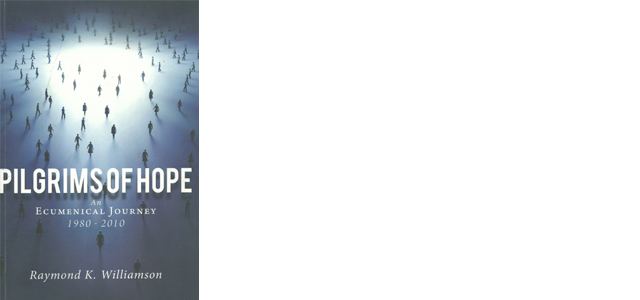An Ecumenical Journey 1980-2010, Rev Dr Raymond K Williamson, OAM
The Church’s vision for the future depends in part on our corporate memory of where we have been. It is not a litany of success stories but the account of the Church’s fallible faithfulness, told warts and all.
Its history of living and working together in Australia is part of this narrative. This volume follows on from Frank Engels’ previous two volumes, “Christians in Australia Volume 1: Conflict and Unity 1788-1826” and “Christians in Australia Volume 2: Times of Change 1918-1978” published in Melbourne by the Joint Board of Christian Education, Melbourne in 1984 and 1993 respectively.
Ray Williamson is the best placed person to write this third volume. He served as General Secretary for the NSW Ecumenical Council from 1986 to 2007. During that time he was also secretary to two national ecumenical commissions, co-founding the Centre for Ecumenical Studies in 2007.
Williamson has divided this scholarly volume into two parts headed “Koininia: Fellowship within the Community of Faith” and “Diakonia: Imitating the Servant Ministry of Christ”. In the first part he writes of the many hurdles and challenges facing the gathering of member churches during the time of the Australian Council of Churches (ACC) and later when it was re-formed into the more inclusive National Council of Churches in Australia (NCCA).
Churches co-operating, as well as the barriers preventing this, are detailed for each of the Australian states and territories, each reflecting the varying cultures and leadership. Included is Australia hosting the 7th WCC Assembly in 1991 and its participation in the Asian region. The varying degrees of youth leadership and engagement are discussed. Grass-roots fellowship has been found through co-operating in events although this has tended to fluctuate with the turnover of personnel. Theological dialogue has been thorough but glacially slow.
While the first part centres on what the church is together, the second part describes what the church does together. Here the challenges are more controversial, but “doing” is as part of the church’s nature as its “being”. Each of the five chapters represents immersion in conscience within the nation and beyond. The issues remain inter-related and ongoing. Together the churches are called to advocate for a sustainable and just society, to strive for authentic reconciliation, to work for global justice and peace, to resettle displaced people, and to engage in mission together.
These chapters, as with the first part, details the tortuous pilgrimage the church has had to undertake in the face of indifference and sometimes hostility to show the compassionate Jesus wherever there is human and ecological suffering. With incredible patience Williamson writes of these journeys in so many of which he has taken part over most of this time span.
Each chapter tells its own story within the time context. None is for quick and easy reading. The pain of yet unrealised visions throbs through like a pinched nerve. The body of Christ feels its own pain in its own pilgrimage.
This volume, like the previous two, needs to be read with eyes wide open like a textbook of history necessary to have been written and read, but with the irrepressible spark of hope calling the rest of us onto the next risky step along a way trod before.
Rev Christopher N Ridings






